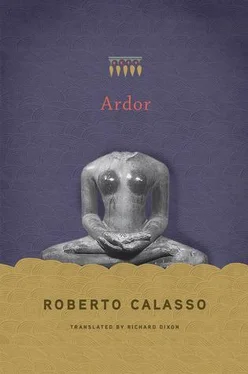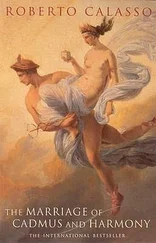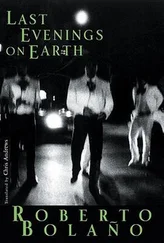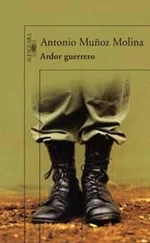132, 20
Ibid.
VIII. PERFECT WAKEFULNESS
135, 11
Ṛgveda , 8.2.18.
136, 6
Śatapatha Brāhmaṇa , 6.8.2.8.
136, 9
Ibid., 6.8.2.11.
136, 10
Ibid.
136, 26
Bṛhadāraṇyaka Upaniṣad , 1.4.10.
136, 28
Ibid.
136, 35
Ibid.
137, 1
Ibid.
137, 20
Louis Renou, “Sur la notion de ‘brahman’” (1949), in collaboration with L. Silburn, in L’Inde fondamentale , edited by Charles Malamoud, Hermann, Paris, 1978, p. 114.
137, 20
J. C. Heesterman, The Broken World of Sacrifice , University of Chicago Press, Chicago, 1993, p. 156.
137, 23
Bṛhadāraṇyaka Upaniṣad , 4.4.23.
137, 24
Ibid., 4.4.6.
137, 29
Kaṭha Upaniṣad , 5.8.
137, 36
Geldner, Der Rig-Veda aus dem Sanskrit ins Deutsche Übersetzt , cit., vol. II, p. 46.
137, 36
Ibid.
138, 1
Louis Renou, Études védiques et pāniṇéennes , De Boccard, Paris, 1958, vol. IV, p. 69.
138, 5
Geldner, Der Rig-Veda aus dem Sanskrit ins Deutsche Übersetzt , cit., vol. II, p. 46.
138, 9
Hermann Oldenberg, Ṛgveda. Textkritische und exegetische Noten , Weidmannsche Buchhandlung, Berlin, 1909, p. 340.
138, 15
Ṛgveda , 5.44.14 (trans. Louis Renou).
138, 16
Stella Kramrisch, The Presence of Śiva , Princeton University Press, Princeton, 1981, p. 3.
138, 20
Sylvain Lévi, La Doctrine du sacrifice dans les Brâhmaṇas (1898), P.U.F., Paris, 1966, p. 81.
138, 30
Śatapatha Brāhmaṇa , 3.2.1.16.
139, 13
Ibid., 3.2.1.31.
139, 30
Ibid., 3.2.1.40.
139, 33
Ibid.
140, 1
Ibid., 2.1.4.7.
140, 11
Ibid., 2.1.4.1.
140, 12
Ibid., 2.1.4.7.
140, 15
Ibid.
140, 24
Ibid., 3.1.1.8.
140, 28
Henri Hubert and Marcel Mauss, “Essai sur la nature et la fonction du sacrifice” (1899), in Marcel Mauss, Œuvres , Minuit, Paris, 1968, vol. I, p. 213.
140, 36
Taittirīya Saṃhitā , 1.2.2.3.
141, 2
Śatapatha Brāhmaṇa , 3.1.3.25.
141, 6
Hubert and Mauss, “Essai sur la nature et la fonction du sacrifice,” cit., p. 214.
141, 21
Śatapatha Brāhmaṇa , 11.5.6.3.
141, 34
Ibid., 11.5.7.4.
IX. THE BRĀHMAṆAS
146, 10
Michael Witzel, On Magical Thought in the Veda , Universitaire Pers, Leiden, 1979, p. 20.
146, 13
Ibid.
147, 33
L. Renou, “Cérémonies védiques dans l’Inde contemporaine” (1949), in Choix d’études indiennes , cit., vol. II, p. 845.
147, 36
Ibid.
149, 3
Charles Malamoud, “Sans lieu ni date,” in Tracés de fondation , edited by M. Detienne, Peeters, Louvain-Paris, 1990, p. 188.
149, 4
Ibid., p. 190.
149, 8
Ṛgveda , 10.82.7 (trans. Louis Renou).
149, 10
Malamoud, “Sans lieu ni date,” cit., p. 188.
149, 18
Ṛgveda , 10.129.3.
149, 31
Śatapatha Brāhmaṇa , 10.6.3.1.
149, 32
Ibid., 10.6.3.2.
149, 34
Ibid.
150, 4
Ibid.
150, 9
Ibid.
150, 12
Ibid.
150, 14
Ibid.
150, 32
Bṛhadāraṇyaka Upaniṣad , 1.1.1.
151, 16
Śatapatha Brāhmaṇa , 10.4.3.9.
152, 7
Ibid., 10.5.4.16.
152, 11
Ibid.
152, 29
Ibid., 11.5.8.6.
153, 15
Staal, Discovering the Vedas , cit., p. 151.
154, 26
Louis Renou, “Les Connexions entre le rituel et la grammaire en sanskrit” (1941–1942), in Choix d’études indiennes , vol. I, cit., p. 366.
154, 27
Frits Staal, Jouer avec le feu , Collège de France, Paris, 1990, p. 80.
154, 35
Ibid., p. 6.
155, 3
Ibid., p. 5.
155, 23
Berriedale Keith, The Religion and Philosophy of the Veda and Upanishads , cit., p. 483.
156, 1
Michael Witzel, Introduction to Kaṭha Āraṇyaka , edited by Michael Witzel, Harvard University Press, Cambridge, 2004, p. xxxi.
156, 32
Ibid.
157, 17
L. Renou and L. Silburn, “Nírukta and ánirukta,” in Sarūpa-bhāratī , edited by J. N. Agrawal and B. D. Shastri, Vishveshvaranand Institute Publications, Hoshiarpur, 1954, p. 76.
158, 7
Karl Hoffmann, “Die magische Weltanschauung im Veda” (1959), in Aufsätze zur Indoiranistik , edited by S. Glauch, R. Plath, and S. Ziegler, Reichert, Wiesbaden, 1992, vol. III, p. 709.
158, 27
Marcel Mauss, “Introduction aux mythes” (1903), in Œuvres , cit., vol. II, 1969, p. 271.
158, 30
Marcel Mauss, “Mythologie grecque et théorie des mythes selon Gruppe” (1903), in Œuvres , cit., vol. II, 1969, p. 283.
158, 33
Marcel Mauss, “Leçons sur l’unité des systèmes mythiques et rituels” (1932–1933), in Œuvres , cit., 1969, vol. II, p. 289.
158, 37
Ibid.
X. THE LINE OF THE FIRES
163, 2
Śatapatha Brāhmaṇa , 1.1.1.1.
163, 9
Ṛgveda , 1.179.5.
163, 20
Śatapatha Brāhmaṇa , 2.3.3.13.
164, 3
Ibid., 7.1.2.14.
164, 13
Ibid., 2.3.3.15.
164, 24
Ibid., 2.3.3.13.
165, 7
Ibid., 1.8.3.20.
165, 23
A. K. Coomaraswamy, “An Indian Temple: The Kandarya Mahadeo” (1947), in Selected Papers , edited by R. Lipsey, Princeton University Press, Princeton, 1977, vol. I, p. 3.
165, 26
Śatapatha Brāhmaṇa , 3.1.1.8.
165, 27
Ibid.
165, 34
Ibid., 3.1.2.20.
166, 4
Ibid., 2.1.4.7.
166, 4
Ibid.
166, 11
Atharvaveda , 9.2.2.
166, 12
Ibid., 9.2.3.
166, 24
Śatapatha Brāhmaṇa , 1.1.1.4–5.
167, 7
Maitrāyaṇī Saṃhitā , 1.8.7.
167, 10
H. W. Bodewitz, The Daily Evening and Morning Offering (“agnihotra”) According to the Brāhmaṇas , Brill, Leiden, 1976, p. 118.
167, 17
Āpastamba Śrauta Sūtra , 6.5.3 (trans. Paul-Émile Dumont).
167, 18
Ibid. (trans. Willem Caland).
167, 33
Michael Witzel, “How to Enter the Vedic Mind? Strategies in Translating a ‘Brāhmaṇa’ Text,” in Translating, Translations, Translators: From India to the West , edited by E. Garzilli, Harvard University Press, Cambridge, Mass., 1996, p. 172.
168, 6
Franz Kafka, The Castle , chapter 18, translated by Willa and Edwin Muir, Penguin, London, 1957, p. 254.
168, 9
W. Rau, Review of Louis Renou, “Études védiques et pāṇinéennes,” vol. XVI, De Boccard, Paris, 1967, in Orientalistische Literaturzeitung LXIV, 1/2, 1969, col. 72.
168, 32
Śatapatha Brāhmaṇa , 1.1.1.11.
168, 36
Ibid., 1.1.1.13.
168, 37
Ibid.
169, 16
Ibid.
169, 20
Ibid., 6.3.1.12.
169, 22
Ibid., 14.1.2.8.
169, 29
Charles Malamoud, “Tenir parole, retenir sa voix,” cit., p. 223.
169, 36
Sāyaṇa on the Śatapatha Brāhmaṇa , 1.6.1.20.
170, 5
Śatapatha Brāhmaṇa , 1.1.1.14.
170, 7
Ibid.
170, 10
Ibid., 1.1.1.17.
170, 23
Ibid., 1.1.1.21.
170, 30
Ibid.
171, 28
Ibid., 1.3.3.11.
174, 24
Ibid., 1.9.3.23.
174, 30
Ibid., 1.9.2.32.
174, 33
Ibid., 1.9.3.23.
174, 37
Читать дальше












